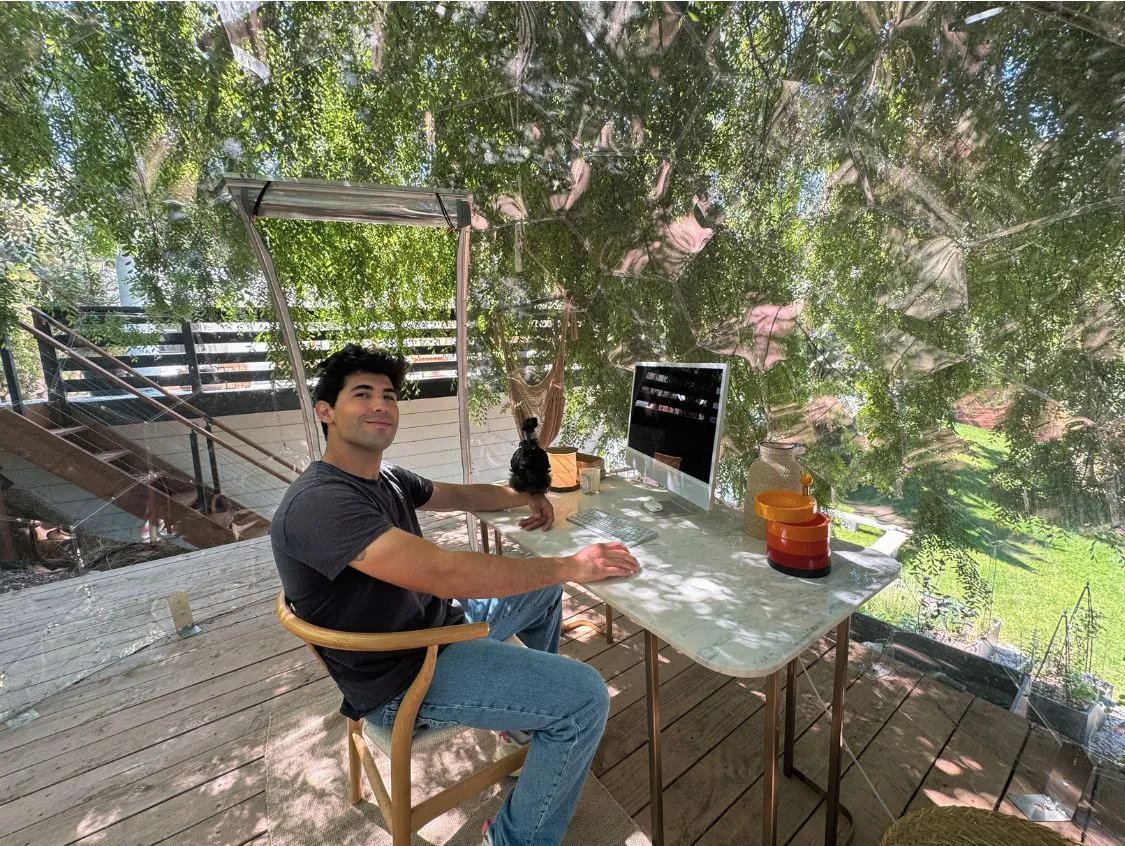TL;DR: Your Quick Guide on Starting a Glamping Business
- Research demand & regulations: Check local tourism trends, seasonality, and zoning/planning rules.
- Choose a location: Aim for scenic yet accessible spots (2–3 hours from major cities).
- Secure permissions: Get planning permission (UK) or zoning approval (US) before investing.
- Decide your scale: Start big (multi-unit site) or small (one Hypedome).
- Budget your setup: From ~$24,000 USD / £17,700 GBP (1 ready-to-go dome and other costs) to $755,000 USD / £555,000 GBP (10-unit site).
- Build infrastructure: Ensure safe access, water, power, sanitation.
- Select your units: Domes, pods, safari tents, yurts, cabins – choose for climate & target market.
- Price smartly: Factor occupancy rates and local competition; aim for fast ROI.
- Market intensely: Use Hipcamp, Airbnb, social media, and a direct booking website.
- Deliver & scale: Focus on guest experience, then expand units or add amenities over time.

What Is Glamping and Why Is It Still Trending in 2025?
So, you’re thinking about starting a glamping business in 2025. Great choice. You’ve picked a sector that’s not just holding steady – it’s climbing.
The global glamping market was valued at USD 3.07 billion in 2024 (£2.26 billion GBP) and is projected to grow to USD 3.39 billion (£2.5 billion GBP) in 2025, which is a healthy 10.4% year-over-year growth.
Glamping is the sweet spot between comfort and nature. It’s where your guests can breathe fresh air under a canopy of stars but still wake up in a plush bed with their coffee made just the way they like it.
It’s also a business that appeals to two big travel trends: sustainable tourism and unique, Instagram-worthy experiences. And that’s why it continues to grow – the audience is broad, and their expectations are high.
Put simply: demand isn’t slowing down, and 2025 is still a fantastic time to enter.

How Does a Glamping Business Make Money?
Here’s the short version: you provide unique accommodation in a beautiful setting, charge per night, and create a guest experience that makes people want to come back – or tell their friends.
In the U.S., owners often see annual profits between $32,000-$200,000, depending on size, occupancy, and pricing (iGMS).
In the UK, five pods at £140/night (~$180 USD) can pull in £127,750-£178,850 annually (Glampitect UK).
It’s hospitality, so margins depend on how well you run it. But with the right setup, the returns can be strong.
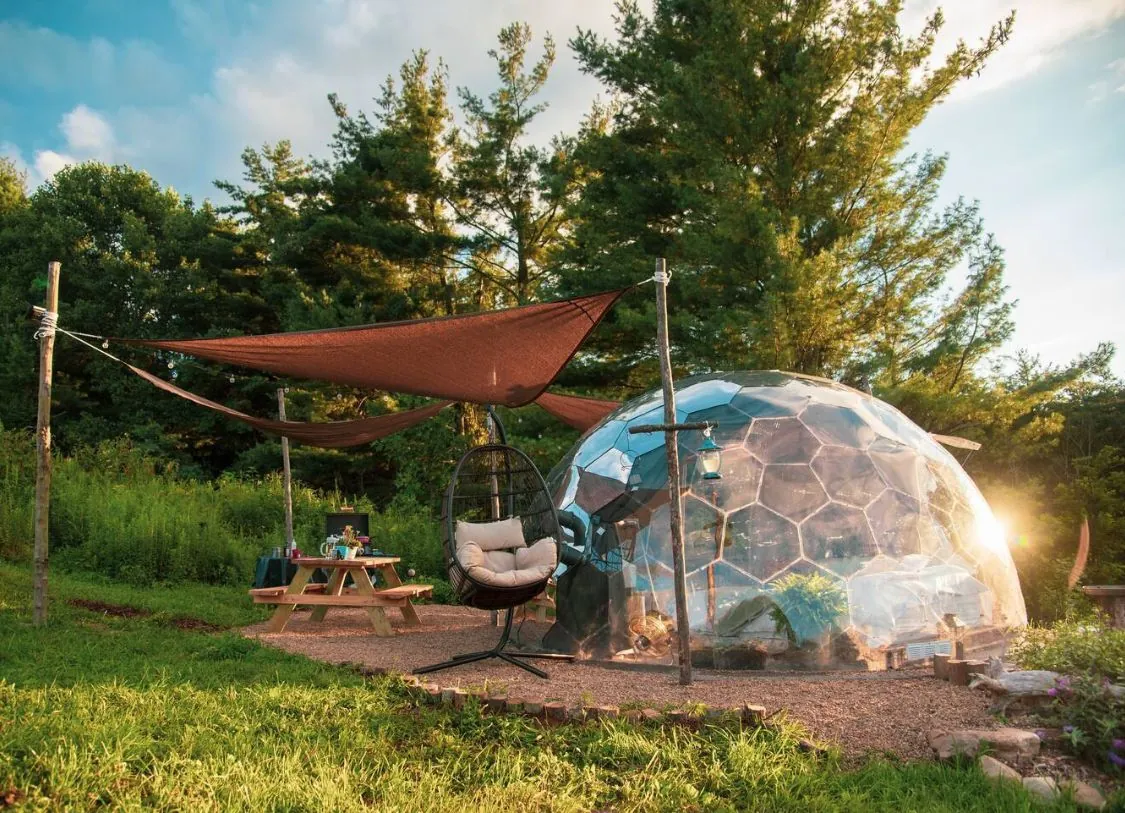
Is a Glamping Business Right for You?
Before you order a dome or clear your land, start with a feasibility study:
- Research local demand using Airbnb, Hipcamp, and tourism data.
- Compare seasonal occupancy trends.
- Assess nightly rate potential for your area.
- Understand local zoning and permitting requirements.
Specialist consultancies can guide you through detailed feasibility and planning stages, but you can also start by exploring free tools like Airbnb search data, Hipcamp listings, and local tourism statistics to get an initial feel for your market.
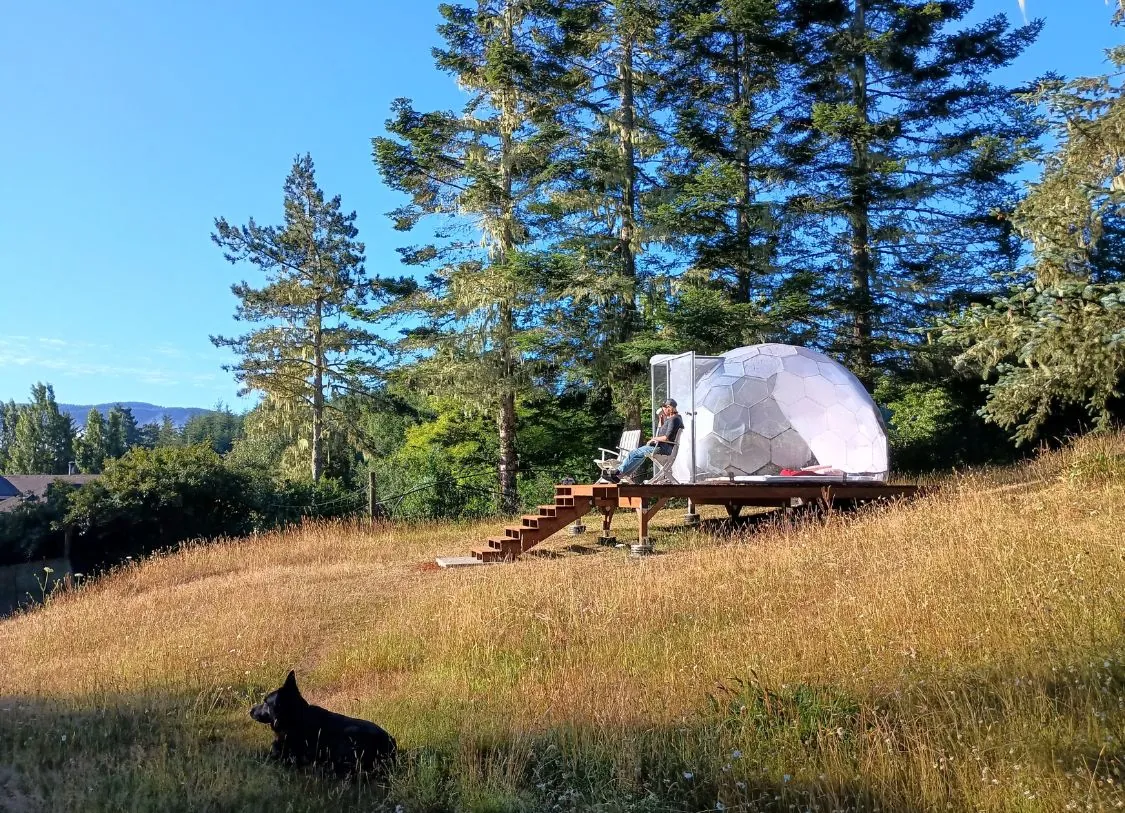
Where’s the Best Place to Start a Glamping Business?
The winning formula for location is accessibility, scenery, and seclusion.
- USA: Within 2–3 hours of major cities, in areas offering lakes, mountains, or forests.
- UK: Tourist hotspots like the Lake District, Cornwall, or Scottish Highlands, ideally with a unique natural feature (waterfront, forest, panoramic views).
Be sure to check whether glamping is permitted on your chosen land – many beautiful spots are off-limits without the right zoning.
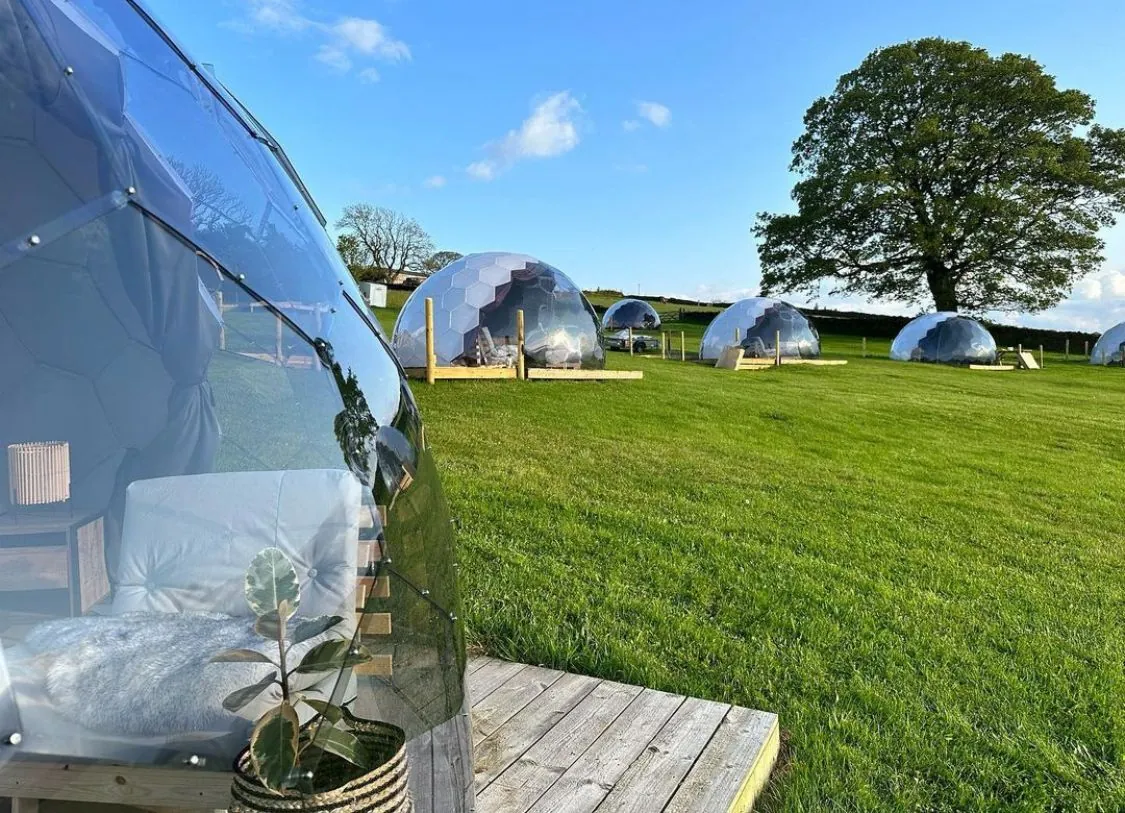
Do You Need Planning Permission or Zoning Approval?
In most cases, yes – and you should confirm before you invest a single dollar or pound.
In the US:
- Start with your county or city planning department — they handle zoning maps, permitted land uses, and building permits.
- Many counties publish zoning codes and maps on their official websites.
- Also check with your state’s environmental agency for any land-use restrictions or environmental review requirements.
In the UK:
- Contact your local planning authority (LPA) – this is usually part of your district, borough, or unitary council.
- You can find your LPA via the Planning Portal and submit initial enquiries or pre-application advice requests.
- Be aware that glamping almost always counts as a change of land use, so formal permission is typically required.
Pro tip: Even if you think your setup is “temporary,” many councils treat any commercial overnight accommodation as a change of use – so always get written confirmation.
Get these sorted early to avoid costly mistakes. Nothing kills momentum like a cease-and-desist notice halfway through your build.
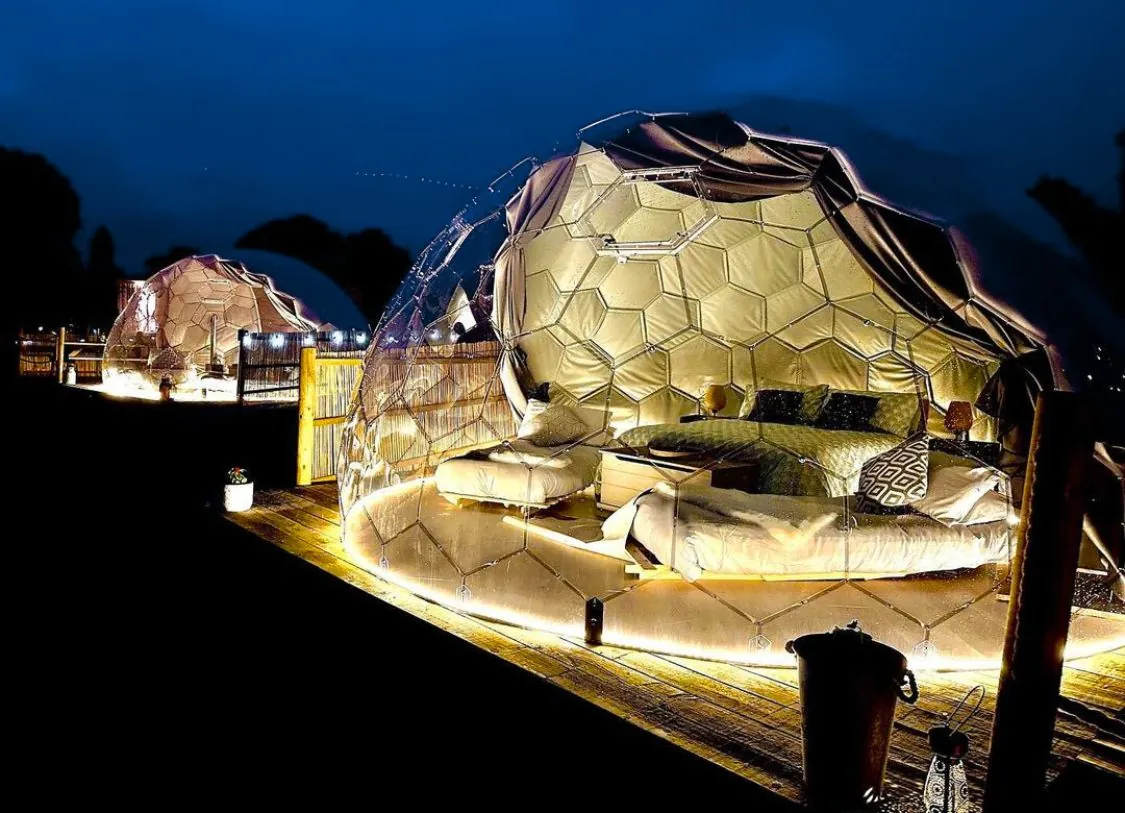
What Infrastructure Does a Glampsite Need?
You can’t skip the basics:
- Access: Safe, usable roads or tracks.
- Water: Mains, borehole, or delivered.
- Power: Grid connection or solar.
- Sanitation: Composting toilets, septic tank, or mains.
Your level of infrastructure should align with your pricing. High nightly rates require reliable utilities and quality finishes.

What Types of Glamping Structures Are Popular in 2025?
Trending structures include:
- Glamping domes and pods
- Safari tents
- Yurts
- Treehouses & cabins
- Off-grid tiny homes
Choice depends on climate, target audience, and desired level of luxury.
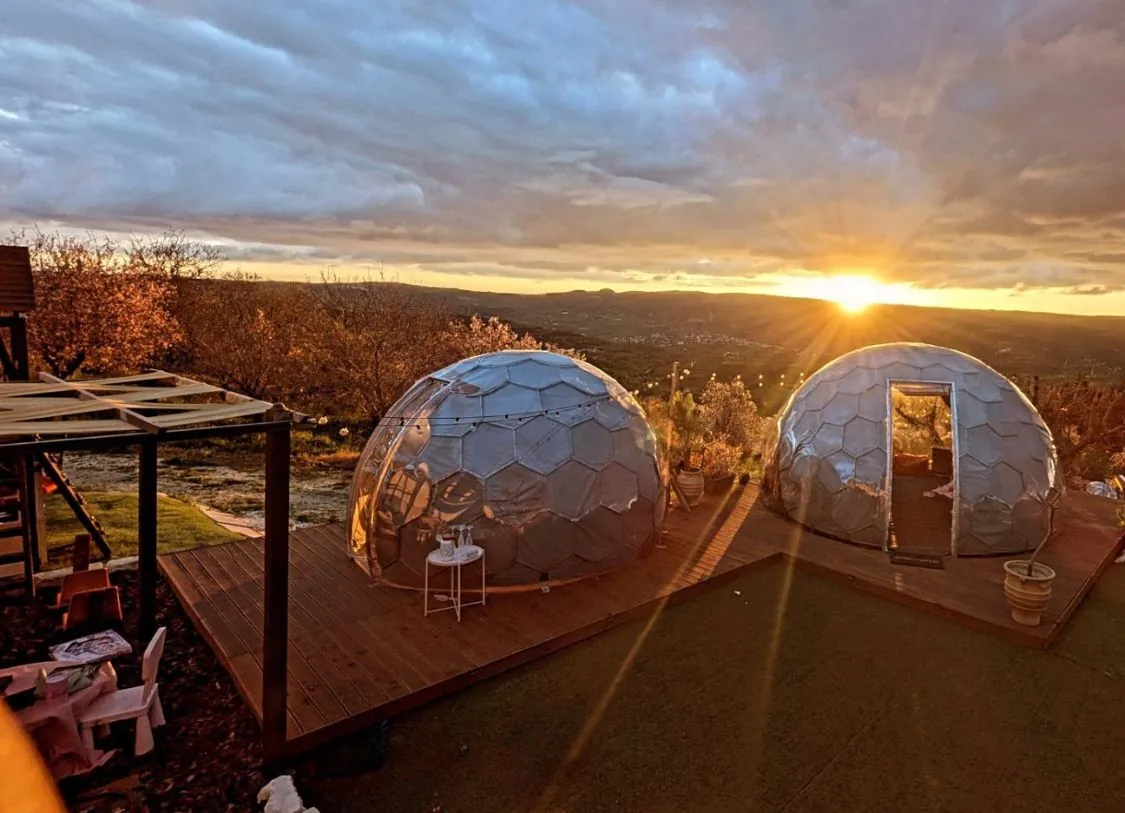
How Much Does It Cost to Start a Glamping Business?
Large-Scale Example
Glampitect’s U.S. model for a 10-unit site with full amenities:
- Groundworks & utilities: $350,000 USD (£257,000 GBP)
- Ten furnished yurts: $300,000 USD (£220,000 GBP)
- Hot tubs: $50,000 USD (£37,000 GBP)
- Permits, surveys: $50,000 USD (£37,000 GBP)
- Website: $5,000 USD (£3,700 GBP)
- Total: ~$755,000 USD (£555,000 GBP).
Small-Scale Example: Starting with One Insulated Hypedome M
You don’t have to invest hundreds of thousands to test the waters.
With one insulated Hypedome M unit, ready for glamping use:
- Hypedome M insulated dome (including: lockable solid door, insulated floor, carpet, insulated wall panels and privacy curtains): $15,000 USD (£11,000 GBP)
- Decking platform: ~$2,000 USD (£1,500 GBP)
- Off-grid setup (composting toilet, solar power, water tank): ~$4,000 USD (£3,000 GBP)
- Branding, permits, marketing: ~$3,000 USD (£2,200 GBP)
- Total: ~$24,000 USD (£17,700 GBP)
This “start small” approach lowers risk, shortens setup time, and lets you prove demand before expanding. It also allows you to build more domes through reinvesting profits.
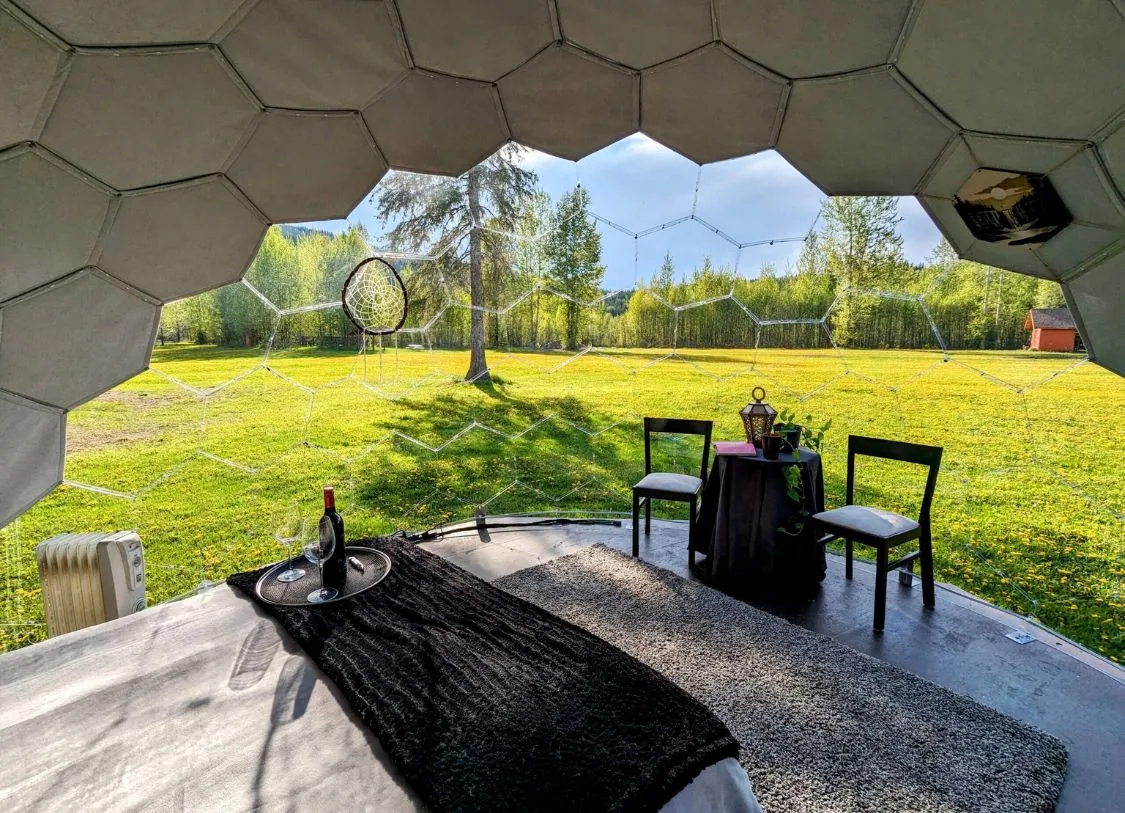
Is a Glamping Business Profitable?
Yes – if you get the basics right. Glamping can be highly profitable because it blends relatively low operating costs with the ability to charge premium nightly rates for unique, experience-led stays.
Your profit will depend on four main factors:
- Nightly rate: premium structures in stunning locations command higher prices.
- Occupancy rate: more booked nights means more income.
- Operating season: some sites operate year-round, others close in winter.
- Add-on revenue: extras like hot tubs, welcome hampers, firepits, or guided tours can boost income per guest.
Large-Scale Example (10-Unit Site in the US)
Based on Glampitect’s U.S. model:
- Nightly rate: $120–$200 USD (£95–£160 GBP)
- Occupancy: 60–70%
- Revenue: $438,000 USD (£322,000 GBP)
- Operating costs: $150,000 USD (£110,000 GBP)
- Net: $288,000 USD (£212,000 GBP)
- ROI ≈ 36%, payback in ~3 years (Glampitect).
Small-Scale Example (1 insulated Hypedome M)
If you start with one insulated dome charging $180 USD (£145 GBP) per night:
- Occupancy: 50% (15 nights/month)
- Annual revenue → $32,400 USD/year (£24,000 GBP/year)
- Operating costs: ~$4,000 USD (£2,950 GBP)
- Net: ~$28,000 USD/year (£20,650 GBP/year)
This means your dome could pay for itself in under 12 months. Adding a hot tub for $40 USD (£30 GBP) per booking or breakfast baskets at $20 USD (£15 GBP) can push those profits higher without expanding your unit count.
Bottom line: With the right mix of location, design, and guest experience, glamping can deliver a return on investment in as little as 12–36 months – whether you’re running a single luxury dome or a full-scale site.
How to Market Your Glamping Business?
- List on Hipcamp, Airbnb, and Booking.com.
- Build a branded website for direct bookings.
- Use Instagram, Pinterest, and TikTok for visual storytelling.
- Collect guest reviews early to boost credibility.
Investing in professional photography pays off – people book the experience, the story, not just the place to sleep.
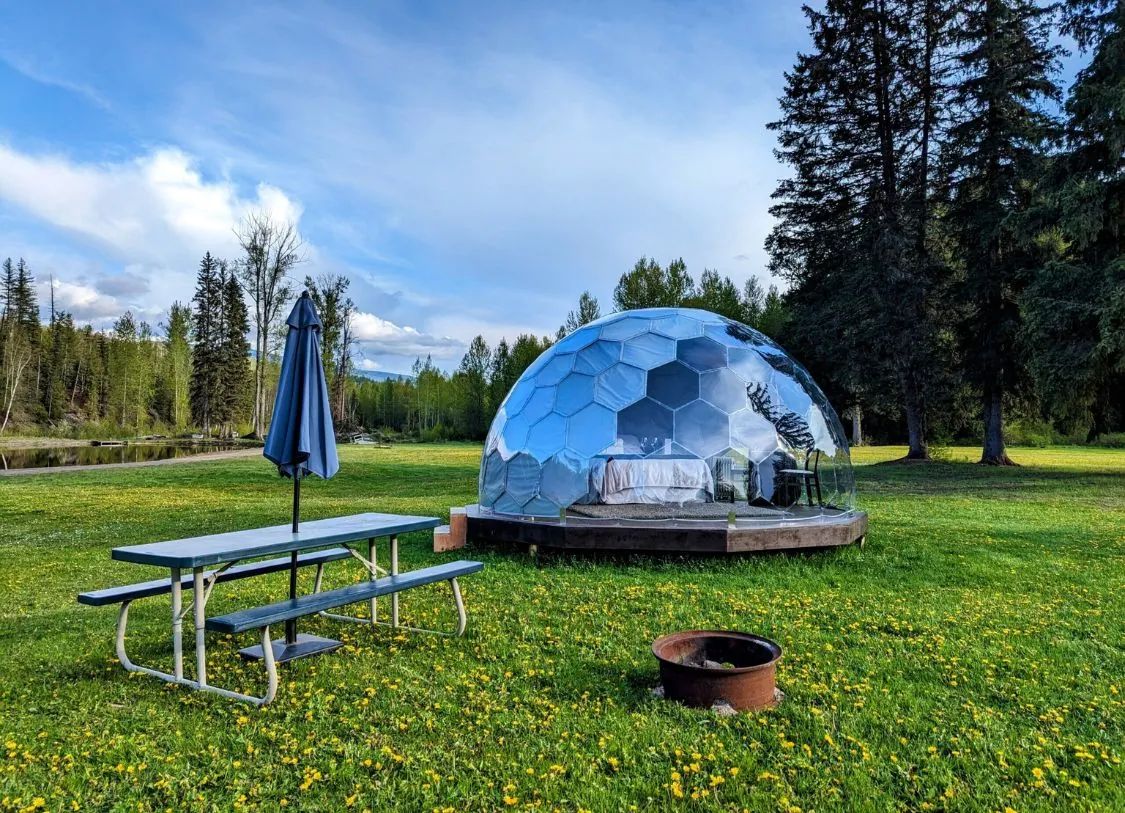
How to Operate and Grow Your Glampsite
Once open, focus on:
- Guest experience
- Maintenance
- Managing seasonal trends
Scaling options:
- Add more units
- Host retreats or events
- Offer extras like firepits and telescopes to watch the night sky
Introduce premium amenities like saunas or hot tubs
Conclusion: Start at Your Speed
If you’ve got the budget, a resort-style glamping site can deliver serious ROI in just a few years.
If you’d rather test the waters, a single Hypedome M dome, equipped with insulation and privacy add-ons, lets you start lean, learn fast, and scale up on your own terms.
Either way, 2025 is a fantastic year to turn that dream into a business – and we hope this guide has given you the confidence (and numbers) to take the first step.
